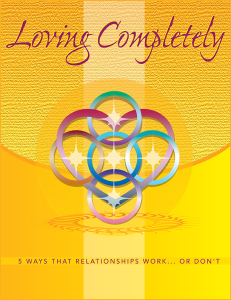In this episode of The Shrink & The Pundit, Dr. Keith reveals what he’s learned in over forty years as a psychotherapist about cultivating integral love relationships, what the shift to a 2nd tier “love operating system” looks and feels like, and how you go about teaching couples to love completely.
Everything is relationship. Only a small sliver of our brains has to do with our sense of individual self—we’re designed to be social, to interact. We’re designed to love. Our development depends upon it.
And yet, it isn’t always easy. Lofty concepts aside, what is the most practical way to teach people how to love and be loved? In this conversation with Jeff Salzman, Dr. Keith Witt–our Doctor of Love himself–shares some of what he’s learned in over forty years as a psychologist and therapist, where, he says, “it’s always about teaching people how to love more completely.”
So what does an integral view show us about love? In first tier structures of consciousness we tend to focus on what’s broken. The orienting question is how do I fix it? This extends to our relationships with our families, therapists, friends and lovers, and of course ourselves. We are biased towards looking for problems. There is a wisdom in that orientation, naturally—it will help you—but only up to a point. And then it will hold you back.
On the other hand, if we enter into relationship with a bias towards showing up and seeing what arises, more often than not what arises are our strengths and virtues. The orientation here is not fixing what is broken, but asking instead what can we create? Dr. Keith calls this a positive, flex-flow approach.
The bridge from a fear-based operating system to a love-based operating system is built by fostering a dialectic between these polarities. As aspiring integralists, growing into second tier structures of consciousness, we want to expand our natural curiosity into those places that keep us from loving completely and welcome the conversation between fear and love.
“In higher stages of development you want to turn towards your pain, to deconstruct it until it turns into love,” says Dr. Keith, “and then you have to embody it. It takes courage, and usually a lot of help.”
Freud’s seminal idea of the unconscious reveals a rich field of practice in intentional development. A hundred years ago people didn’t get that our psyches are influenced by forces outside of our awareness. But now most of us do, so much so that as Jeff says, “by the time we reach the postmodern stage we can’t stand the idea that there’s a place inside of ourselves that we can’t see.” So we get more and more interested in our shadows. The most difficult type of shadow is the kind that we resist. Defensive states cut us off from our sense of self-reflection and are the main impediment to investigating parts of ourselves that may be fragmented and unloved. Changing our defensive states into states of healthy response is one of the main areas that Dr. Keith covers in his teaching because it’s so crucial to loving completely.

Check out Dr. Keith’s new web course: LOVING COMPLETELY: 5 Ways Relationships Work…or Don’t, with over 50 modules designed to help you and your partner improve your connection on every level: physical, emotional, psychological, and spiritual.
To learn about defensive states, Dr. Keith suggests you write down the last time you felt threatened. “What was your amplified or numbed emotion, distorted perspective, destructive impulse? Where was your empathy and self-reflection?” As you write, you may notice the balance of emotions changing.
Over time your mental and emotional states start to become objects in your awareness. A little bit of daylight is all you need in there to begin making adjustments from a defensive response to a healthy response. People bridging into 2nd tier structures of consciousness begin to do this instinctively—the noticing, the turning-towards. When we think about markers or qualities of 2nd tier consciousness, we think of a radical acceptance of the human condition and an affection for all of its craziness, including our own.
Turning towards awareness of self and embodying a change will put your attention less on fixing yourself or a partner and more on appreciating and cultivating both of your strengths. Like the simple Buddhist practice of noticing, it can transmute your suffering into wisdom and love.
Listen to this episode of The Shrink & The Pundit podcast below. Click here to find out more about Dr. Keith’s new self-directed web course, Loving Completely, 5 Ways Relationships Work…or Don’t.
Podcast: Download
Subscribe: Google Podcasts | RSS






Dr. Witt mentioned that Freud’s theory (or concept) of the unconscious was listed among the greatest new ideas by somebody or some group. That seems ridiculous. Freud’s concept of the unconscious is/was a feeling humanity has had for eons before dressing it up in a sexy outfit.
The Greeks, along with the Indians, had the idea of links of causation that affect us beyond our understanding. Lao Tzu points out how the Tao affects us beyond our knowing. And I imagine that people in the Middle Ages of Europe had a feeling that forces beyond their knowledge and control were affecting their lives.
If the word “unconscious” was taken out of the English language today, I don’t think our lives would change at all.